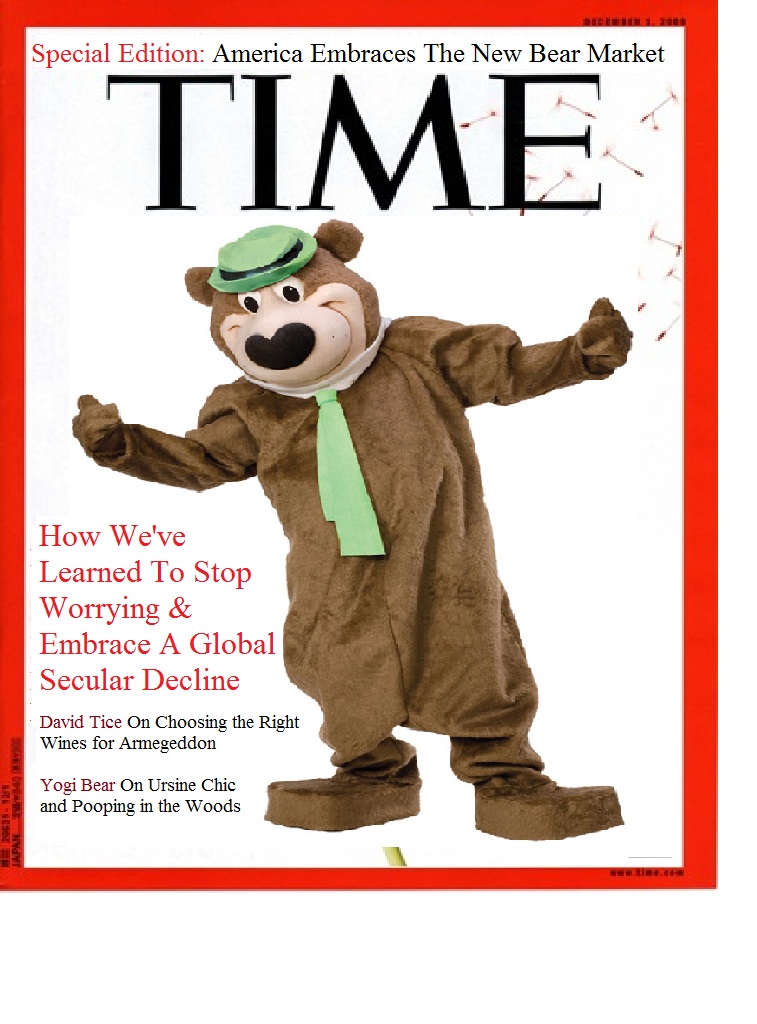Original post:
Short answer: It means we're still in a declining market.
Longer answer: A comment at MarketBeat back in June:
During the 90's bull the drops were sudden and scary. The opposite was true in the 2000-2002 bear market, with the short-covering rallies moving dramatically against the down-trend.
The Nasdaq lost 77.9% from the March 10, 2000 high of 5048.62 to the October 9, 2002 low of 1114.11.
This behavior pattern is also a pretty good counter to the "You can't time the market" crowd's favorite old saw "Don't miss the ten best days".
The fact is those "ten best days" tend to occur during bear markets:
Here's a list of the Nasdaq's largest GAINS, from Oct 28, 2008:
Top 10 Biggest Point Moves
 |
Top 10 Biggest Percent Moves

Here's the official NASDAQ list, current through yesterday.
Every one of them occurred during a bear market. I seem to remember a couple others in early 2009, again before the cyclical bull began on March 9.
So if you want to experience the "Ten best" be prepared to suffer through some heavy losses to get there.
The inverse is not necessarily true though. Some of the largest point and percentage declines will also occur during bears although the big daddy, the 22.6% crash of Oct. 19, 1987, happened five years into the 18 year mega-bull that started Aug. 12, 1982.
The one time you get explosive moves to the upside in bull markets is at the beginning. The cyclical bull we just went through started with a one day 5% move on Mar. 10, 2009 and ran from there.
Here's part of a post from July of this year:
...The up move last week, five consecutive up days totaling 5.5% is reminiscent of, although smaller in magnitude than, the start of the Big Bull 1982-2000:So there you go. all you have to do is observe what's going on.
The market bottomed at 776.92 on Thursday August 12th, 1982 and started moving fast:It is also reminiscent of the current run off the Monday March 9, 2009 bottom of 6,547.05.
Aug. 13 788.05
Aug. 16 792.43
Aug. 17 831.24
Aug. 18 829.43
Aug. 19 838.57
Aug. 20 869.29
Aug. 23 891.17
Just like that, 14.70% in seven trading days.
Four consecutive up days ending at 7,223.98 for a 10.33% pop.
The problem is, I don't believe the picture the tape is telling....
And disregard it.
Update: Mark Gongloff at MarketBeat posted "Yesterday’s Face-Ripping Comeback Was Probably Not the Bottom" five minutes before I hit the 'send' button.
From Phil Pearlman:

The old Wall Street pro (and railroad man) E.H. Harriman took note of the herding behavior and said:
“I can distribute more stock on up-ticks than I can on down.
You can tell the major trend from the countertrend moves. Through the ’90′s bull (1995-2000 R.I.P.) the downdrafts were short and violent. Who can forget “Buy the dips”?